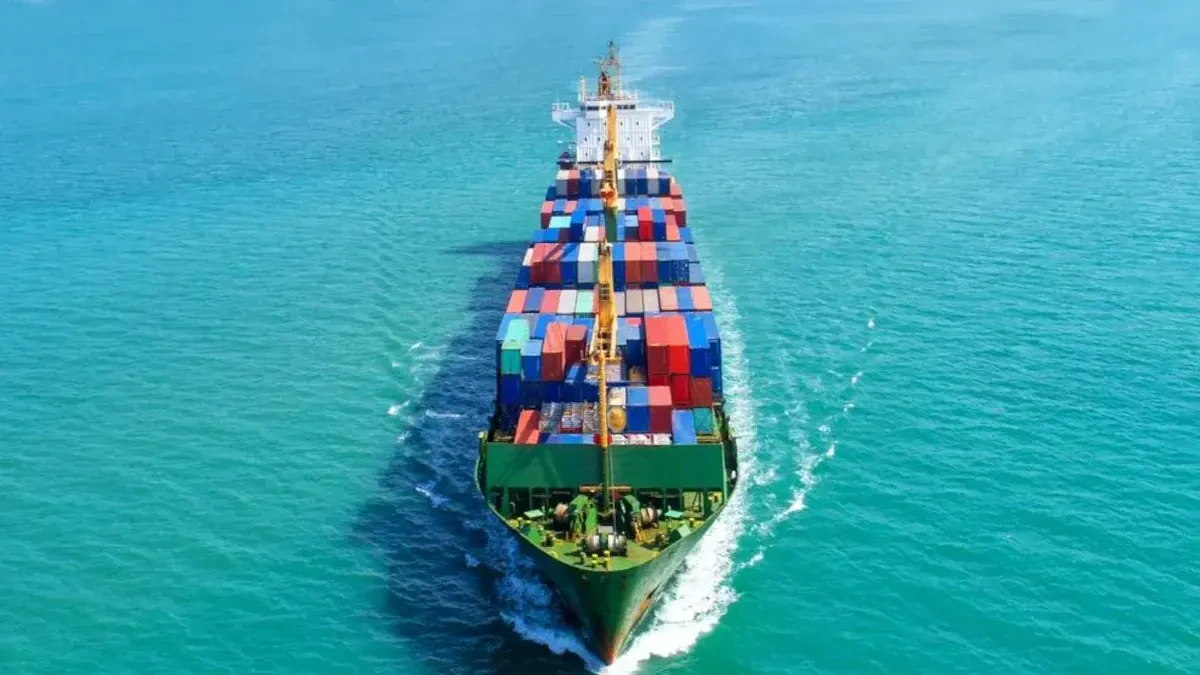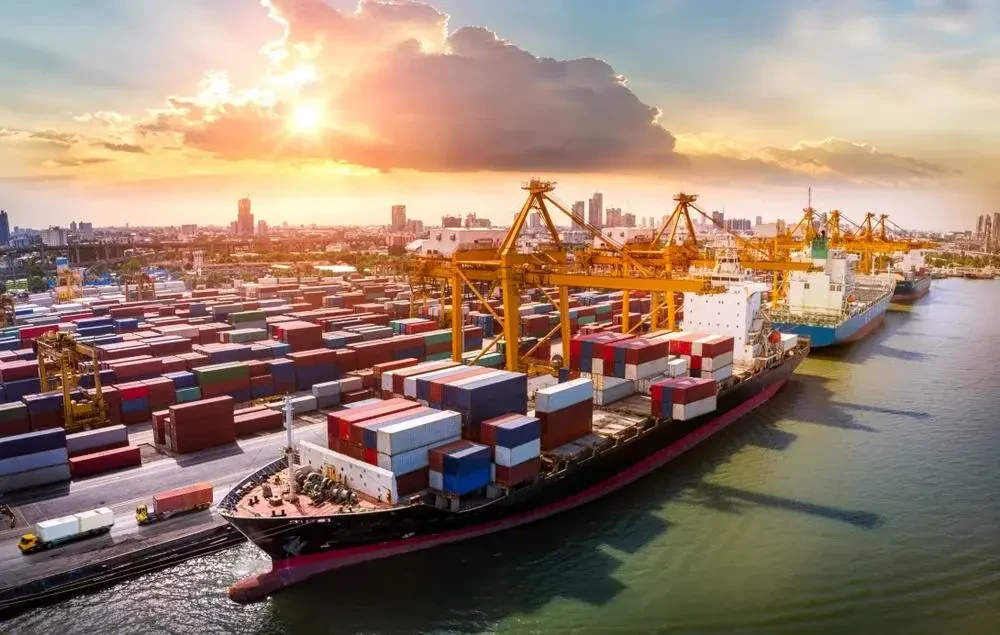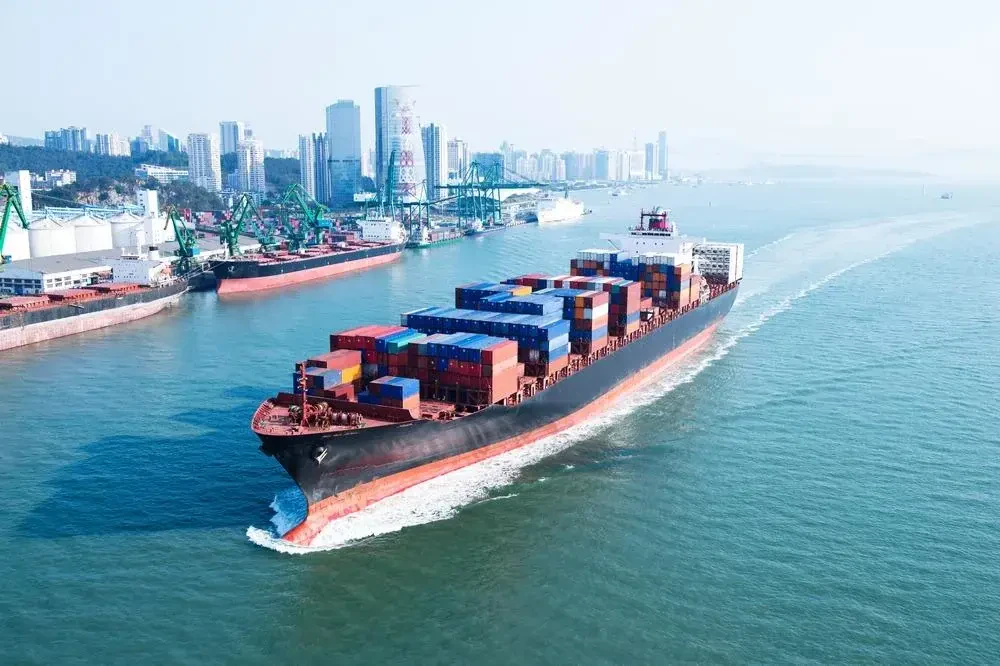Published by Chris Townsend
Last updated Nov, 14 2025

How Much Does It Cost To Ship A Container To South Korea?
South Korea Container Shipping Cost
Someone looking to ship items to South Korea has a lot of research to do in order to understand everything that comes with it. For starters, the size of your cargo, and the distance between the origin and the destination, will be a factor in determining the cost of shipping. If you can’t wrap your head around all that, let Three Movers ship your items from the origin port for you. We can ship your container to a wide variety of countries, including South Korea.
Factors That Affect the Cost of Shipping to South Korea
When considering the cost of shipping freight, the following 5 factors will be crucial:
- The volume and weight of the items to be shipped: A higher volume or weight of items, depending on the type of transportation, will have a direct impact on the cost.
- The type of transportation used: Air freight transportation is faster, but it will increase the cost of shipping when compared to freight by sea.
- Distance: Naturally, the distance between the two countries will affect the cost of cargo.
- The destination port: The destination port will have an impact on the types of taxes and fees you’ll face. For South Korea, this will probably be Busan.
- The peak period for shipping items to South Korea is between July and October. The period between January and February is another busy time because of the Chinese new year. Shipping during these periods affects the cost of cargo.
Which Size of Freight Container will Best for Me?
There’s a lot involved in selecting the correct size of the container. However, the average person will go with a 20ft or 40ft size. The contents of a three-bedroom house can fit into a 20ft shipping container. You can ship a car in one of these containers, but there won’t be much space left. If your cargo is larger than these estimates, you are better off with a 40ft container.
There are two types of container load options to choose from. For most people, you’ll go with Full Container Load (FCL). However, there are situations where a person’s cargo doesn't fill a container. For these cases, you can opt for Less Than Container Load (LCL). In LCL, shipments from different clients will be aggregated into a single container and shipped. Cubic meters is the metric used in calculating shipping cost.

Instant Rates For Shipping Containers To South Korea
Average Container Shipping Rates Estimates

FCL shipping is best for transporting lots of boxes, pallets and anything which will require a full container freight to South Korea of up to 45,000lbs.
Full Container Load (FCL) Delivery Charges | |
|---|---|
| 20 ft Container | $330 |
| 40 ft Container | $380 |

LCL shipping is more affordable way to transport less than container load shipments to South Korea.
Less Than Container (LCL) Delivery Charges | |
|---|---|
| LCL | $55/CBM |
| Household Goods | $430 |
| Personal Effects | $485 |

International house moving to South Korea services - quick, easy and cheap.
International House Moving Costs | |
|---|---|
| Partial House (2000Lbs & Less) | $460 |
| 1 Bedroom (3850 Lbs) | $1250 |
| 2 Bedroom (4500 Lbs) | $1850 |
| 3+ Bedroom (8750 Lbs) | $2200 |

International auto transport services to South Korea via RoRo and container ships. Ship cars, trucks, suvs, atv's, boats, RV's, heavy equipment and more.
Container Car Shipping | |
|---|---|
| Sedan (Container) | $1070 |
| SUV (Container) | $1130 |
| Sedan via RORO | $750 |
| SUV via RORO | $810 |
Understanding The Different Types of Freight Transportation
The main methods of freight transportation are sea, air, ground, and rail. The first two methods are the most common methods of transporting cargo into the country.
The choice of method depends on the kind of items being shipped. If the cargo consists of household items or a car, shipping by ocean freight services is a more suitable option, as the size is less of a factor. Your cargo arrives at the seaport where it is offloaded, cleared by the authorities, and then sent to the intended destination.
There is also the option of freight transportation by air. It can be quicker than sea freight, but it is usually more expensive. Smaller items, fragile items, or items that are time-sensitive, will benefit from air freight shipping. In the case of air transport, the cargo has to be inspected and cleared at the destination airport and then transported inland by a vehicle or a smaller plane.
Additional Shipping Prices
There are usually additional shipping costs when freight a container anywhere. The additional cargo costs to expect are:
- Insurance: Insuring items adds to the overall cost of shipping. This is vital in providing much-needed cover for your cargo.
- Custom fees: South Korea has a flat import value-added tax (VAT) of 10%. Certain luxury goods might have an extra 10% excise fee.
- Inspection: You might be charged for inspection of the shipped items if they are of the luxury kind, like certain animals.
- General Rate Increase (GRI): This is an adjustment of freight rates across specific trade routes. If the demand for cargo on a route increases, shipping costs might also increase.
- Delivery Times: The delivery times can add to shipping costs. If a client requires express cargo, there will be additional costs.
What is the Next Step?
The next step is contacting Three Movers for a free quote. You can fill the online form or call us at (888) 202-0036.

Find Cargo Containers For Freight Transport & Relocation
Frequently Asked Questions
Like other countries, there are documents that are necessary when shipping to South Korea. The commercial invoice is one such document. An original invoice and two copies must be presented with the shipping documents and must include total value, unit value, quantity, marks, product description, and shipping from/to information. A certificate of origin is required for certain products. Two copies of the packing list are required. A clean bill of lading identifying the name of the shipper, the name and address of the consignee, the name of the port of destination, description of the cargo, a price list of freight and insurance charges (CIF), and attestation of the carrier’s acceptance onboard for the goods is sufficient.
A bill of lading is a very important document in the shipping of goods. A completed BOL legally shows that the carrier has received the freight as described and is obligated to deliver that freight in good condition to the consignee. A bill of lading contains information like where it’s going, the piece count, how it’s billed, and how it’s to be handled on the dock and trailers. It could be on a prepaid or collect basis.
Some items aren’t allowed into the country no matter the conditions of importation. Those are called prohibited items. Some other items are allowed into the country under specific conditions. Such items are called restricted items. Prohibited items include books, photos, films, and other items of similar nature that violate constitutional orders, or, may be harmful to public peace and customs. Items that contain confidential information on government or intelligence activities. Counterfeit, forged, or fake money, banknotes, bonds, and other securities. Restricted items are all weapons (including replicas & decorations) such as guns & swords, as well as gunpowder, explosives, toxins, etc. Illegal drugs such as opium, marijuana/cannabis, cocaine, etc.
98.8% of U.S. products enter Korea duty-free. However, customs duties can be adjusted every six months, within the limit of the basic rate, plus or minus 40 percent. This is done to stabilize domestic commodity markets. The country has a flat 10% Value Added Tax (VAT) on all imports and domestically manufactured goods. A special excise tax of 10-20% is also levied on the importation of certain luxury items and durable consumer goods. Tariffs and taxes must be paid in Korean Won within 15 days after goods have cleared Customs. Duties are assessed on a Cost-Insurance-Freight (CIF) basis.
Shipping taxes are fees that are fixed as a percentage of all shipping business transactions while shipping duties are variable fees placed on specific items imported into the country. Shipping taxes and shipping duties are used to raise revenue but shipping duties have the extra function of protecting the economy of the destination country.
Yes, shipping containers are watertight and properly ventilated. The waterproof function is important in maintaining the integrity of cargo as they are transported across oceans. The ventilation is important in making the transportation of animals and plants, possible. However, the water seals age with time making inspection of shipping containers important. The ventilation properties of shipping containers depend on their manufacturing purposes. This means that containers should be checked for proper ventilation if items that need aeration are to be shipped.
A broker is an agent that mediates business transactions between a carrier and a shipper. A freight forwarder is a company that handles all the documentation and logistics including tracking and storage of cargo on behalf of a carrier. They aren’t carriers themselves and don’t issue their company bill of lading. An NVOCC is a None-Vessel Owning Common Carrier. The difference between an NVOCC and an actual carrier is that an NVOCC doesn’t own or operate a ship. They hire the services of carriers to help them transport their clients’ goods. They issue bills of lading in their name.
The maximum weight that can be loaded into a container is usually 51,000lbs for a 20ft shipping container and 67,000lbs for a 40ft shipping container. It is important to note that different countries have different weight limits for transporting shipping containers by road. This may lead to repacking of cargo into two or more shipping containers for transportation by road. So, check with the destination transportation company for details on weight limits on shipping containers.
While not mandatory, hiring a customs broker is highly recommended. They help ensure proper documentation, classify goods correctly, and manage duties and taxes efficiently, which can prevent delays at South Korean ports.


